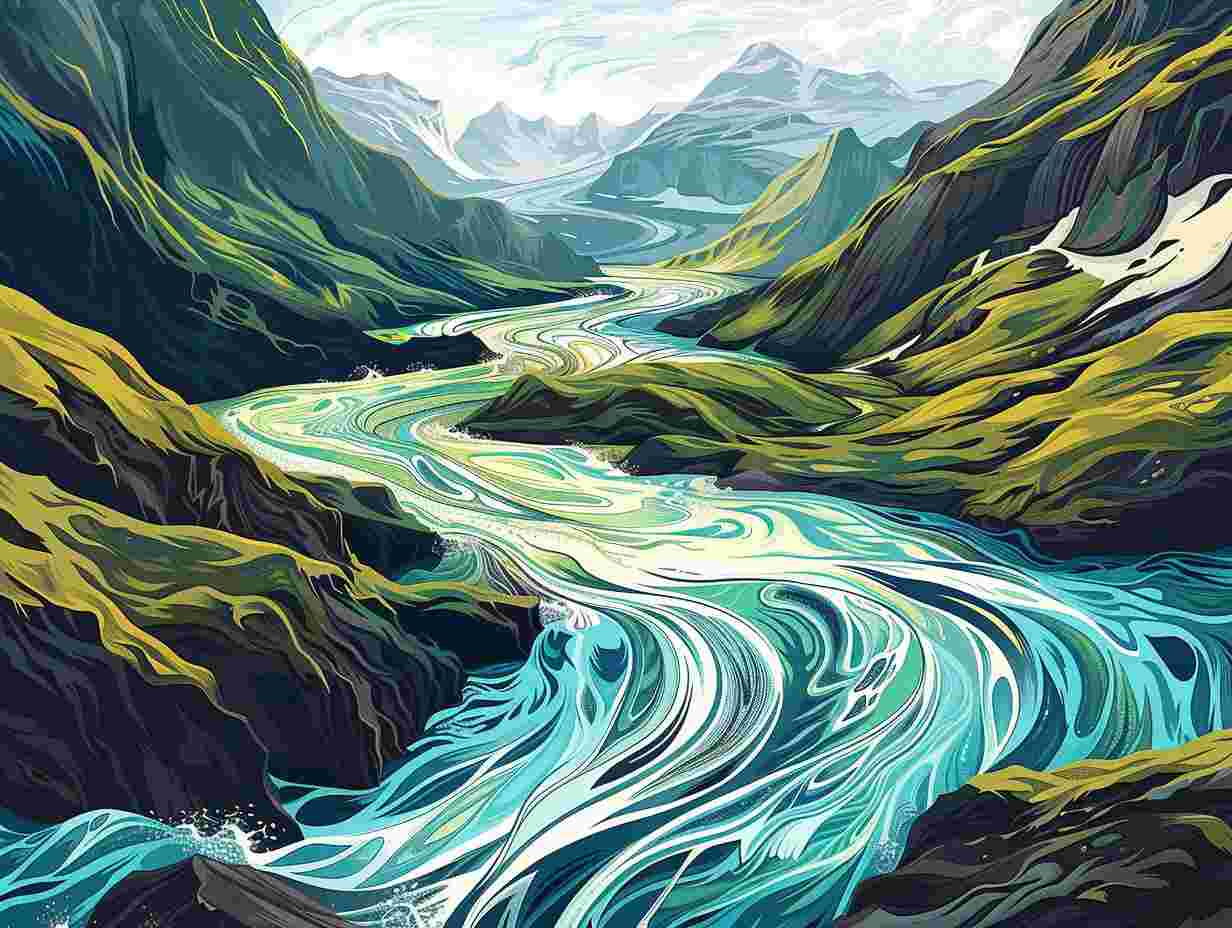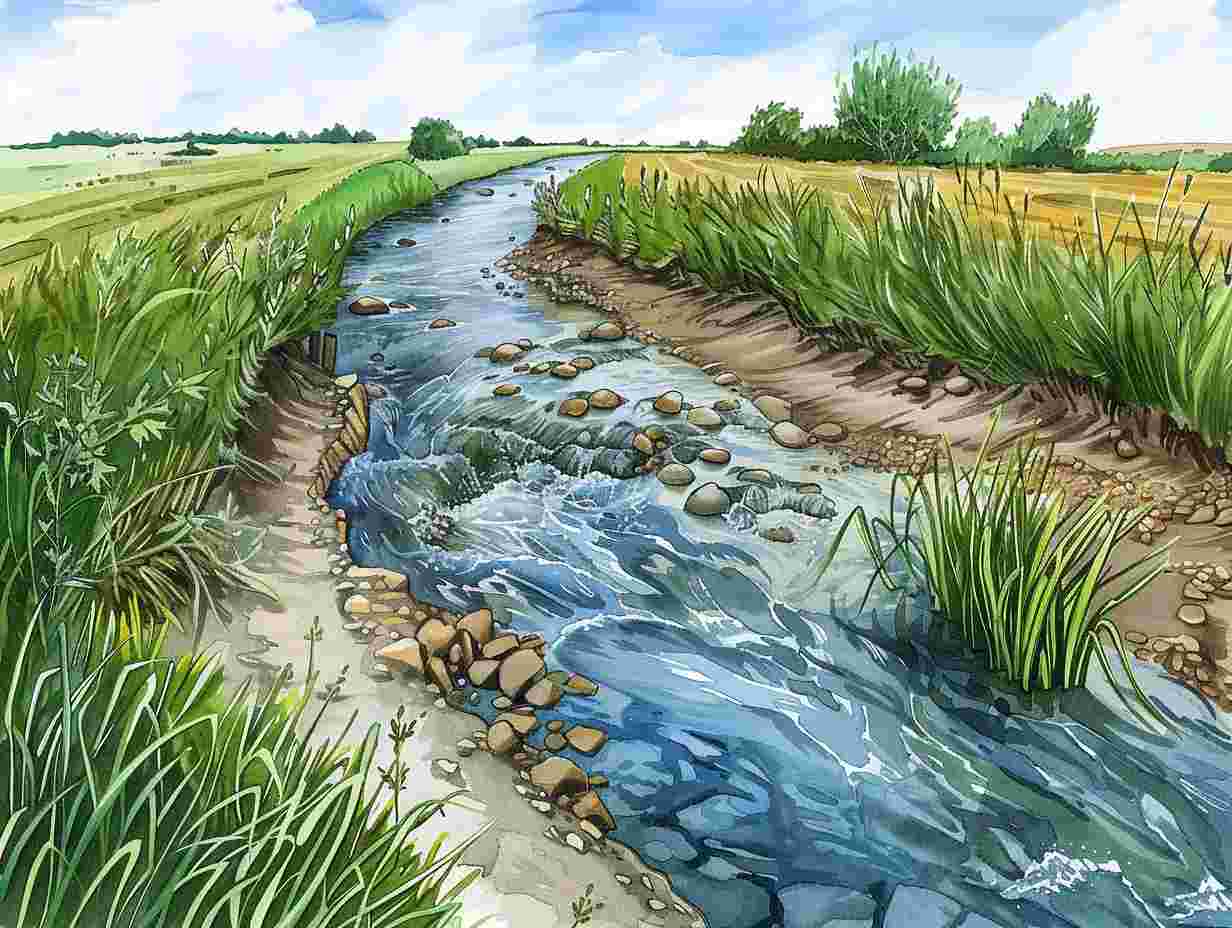
Introduction to River Currents

As you stand on the riverbank, observing the gentle flow of water, have you ever wondered about the intricate movements beneath the surface? River currents hold a world of secrets that dictate the behavior of these mighty waterways.
Understanding their complexities can reveal a wealth of knowledge about the environment around you. Curious to unravel the mysteries of what lies beneath?
Key Takeaways
- River currents are the heartbeat of waterways, influenced by factors like gradient, water volume, and obstacles.
- Understanding current formation is crucial, driven by gravity, riverbed shape, and water volume.
- Different types of currents exist (swift, eddy, tidal, whirlpools), requiring distinct navigation skills.
- Factors like riverbed gradient, water volume, channel shape, and obstacles influence current strength and direction.
The Basics of River Currents
If you’re new to understanding river currents, visualize them as the flowing heartbeats of a waterway. These currents are like the pulse of a river, guiding its movement and shaping its path. Understanding the basics is essential for exploring these powerful forces of nature.
River currents are influenced by various factors such as the river’s gradient, volume of water, shape of the riverbed, and obstacles in the water. The speed of a current can vary, with faster currents typically found in narrower sections or areas with a steeper gradient.
Learning to read the signs of a river’s flow can help you anticipate its behavior and make informed decisions while on the water. Stay tuned for more insights into the fascinating world of river currents.
Formation of River Currents

As you explore the fascinating world of river currents, understanding how these powerful forces are formed is key to traveling waterways effectively. River currents are primarily formed by the interaction between gravity, the shape of the riverbed, and the volume of water flowing through the river.
When water moves downstream, gravity plays a critical role in pulling it towards lower elevation areas, creating the force that drives the current. The shape of the riverbed, including bends, slopes, and obstacles, can influence the speed and direction of the current. Additionally, the volume of water flowing in the river affects the strength of the current, with higher volumes typically leading to more powerful currents.
Types of River Currents
When traversing river currents, understanding the various types is essential for safe and efficient travel. Different types of river currents can pose unique challenges and opportunities for those moving through them. Here are four key types to be aware of:
-
Swift Currents: These fast-moving currents can be challenging to move through and may require advanced skills.
-
Eddy Currents: Circular currents that flow against the main current, often forming near obstacles like rocks or bends.
-
Tidal Currents: Caused by the gravitational pull of the moon and the sun, these currents change direction with the tides.
-
Whirlpools: Intense rotating currents that can be hazardous to boats and swimmers if not approached with caution.
Factors Influencing Current Strength

To understand the strength of river currents, consider the various factors that influence their intensity.
The primary factor affecting current strength is the gradient of the river bed. Steeper gradients result in faster-flowing currents, while gentler slopes lead to slower currents.
Another important element is the volume of water in the river. Higher water volumes typically lead to stronger currents.
Additionally, the shape of the river channel plays a role; narrower channels tend to have faster currents than wider ones.
Moreover, obstacles such as rocks or debris can disrupt the flow, increasing turbulence and altering current strength.
Understanding these factors can help you comprehend why river currents vary in speed and intensity.
Understanding Current Direction
Explore how the direction of river currents influences their behavior and impact on the surrounding environment. Understanding current direction is essential for various reasons:
-
Navigation: Boaters and ships rely on understanding current direction to navigate effectively.
-
Erosion and Deposition: Current direction affects erosion on one riverbank and deposition on the other.
-
Temperature Distribution: Current direction influences how heat is distributed in the water, impacting aquatic life.
-
Pollutant Transport: The direction of river currents determines the movement of pollutants, affecting water quality downstream.
Frequently Asked Questions
How Do River Currents Impact Aquatic Ecosystems?
River currents impact aquatic ecosystems by shaping habitats, transporting nutrients, and influencing the distribution of species. They regulate temperature, oxygen levels, and sediment flow, essential for the health and diversity of underwater life.
Can River Currents Cause Erosion Along Riverbanks?
Yes, river currents can cause erosion along riverbanks. The powerful force of moving water carries sediment and can wear away the banks over time. It’s important to understand and manage these impacts for environmental stability.
Are There Any Safety Precautions That Should Be Taken When Navigating River Currents?
When moving through river currents, always wear a life jacket, be mindful of your surroundings, and avoid strong currents. Stay near the shore, never swim alone, and know the river’s depth. Follow safety guidelines and enjoy your time on the water.
Is It Possible to Predict Changes in River Currents Over Time?
Imagine the river’s rhythms, for they whisper secrets of change. By observing patterns in weather, tides, and topography, you can predict shifts in current strength and direction over time, enhancing your navigation skills.
How Do River Currents Affect the Transportation of Sediment and Nutrients Downstream?
River currents carry sediment and nutrients downstream, influencing the ecosystem’s health. By understanding these currents, you can predict where and how these essential elements will be distributed, aiding in environmental management and conservation efforts.
Conclusion
Now that you understand the basics of river currents, don’t forget to always consider the factors influencing their strength and direction.
Next time you’re near a river, take a moment to observe the currents and put your newfound knowledge to the test.
Who knows, you may just uncover the truth behind a popular theory about how river currents really work.
Keep exploring and learning about the fascinating world of rivers!
More information about Introduction to River Currents
Affiliate information declaration: We may earn revenue from the products referred on this page and participate in affiliate programs.


